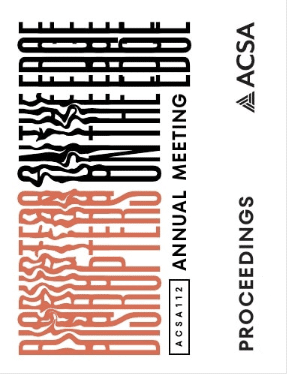Author(s): Thomas Mouton
This paper will review the Black Masking Indian culture of New Orleans, Louisiana through the lens of Henry Louis Gates Jr’s. Signifyin(g) concept as well as concepts from the Situationist International (SI). Outside of New Orleans they may be more commonly known as Mardi Gras Indians, but Black Masking Indians will be used throughout the paper. Gate’s literary concept allows for a historicization of the Black Masking Indian culture as a series of subversive acts by utilizing the rhetorical black homonym to contextualize the Black Masking Indian processions not merely as just another organization parading during Mardi Gras. With the inclusion of literary concepts, these place-making performative rituals embody AbdouMaliq Simone’s Generic Blackness which “points to the substrates of city-making which prevailing regimes of urban power can never fully apprehend or control”. Literary concepts are crucial to overcoming these issues of apprehension, illuminating the complexity inherit within any marginalized community’s inhabitation of space. Utilization of literary concepts allow for apprehension of the performative processions as radical spatial praxis with recognizable similarities to psychogeographical concepts developed by the French collective. In Black Masking Indian procession’s one will find variations in application of Psychogeography which allow for the study of specific effects of the urban (geographic) environment on the emotions and behaviors of individuals when conducted by racialized groups. The sections proceeding the initial literary review will critically examine the lack of inclusive Psychogeography studies from the SI. As Khatib was the sole none white member of the SI, examination of Abdelhafid Khatib’s failed attempt at a psychogeographic study raises critical questions for the application of SI concepts with marginalized communities. Overall the goal of this paper is to examine the potential inclusion of literary concepts countering the typical reading of the Black Masking Indian processions and New Orleans Mardi Gras as “one in the same.” Presented as such is characteristic of a Eurocentric hegemonic observation, both in its failure to identify the micro-cultural events as radical spatial praxis and its perpetuation of passive racist tropes of marginalized communities as void of agency and incapable of self-actualization. Insights from this comparative review provide a critical lens in which to view the social, geographic, and historic separation between the SI and Black Masking Indians. What can be concluded from this comparative review is how the complexity of subaltern urban spatial inhabitation requires the synthesis of theorists not often associated with spatial studies. This of course highlights the continued predominance of white Eurocentric spatial theories and the need for a pluralistic methodological approach that develops a critical spatial discourse incorporating theories from the Global South as well as literary concepts.
https://doi.org/10.35483/ACSA.AM.112.49
Volume Editors
Germane Barnes & Blair Satterfield
ISBN
978-1-944214-45-6

 Study Architecture
Study Architecture  ProPEL
ProPEL 
